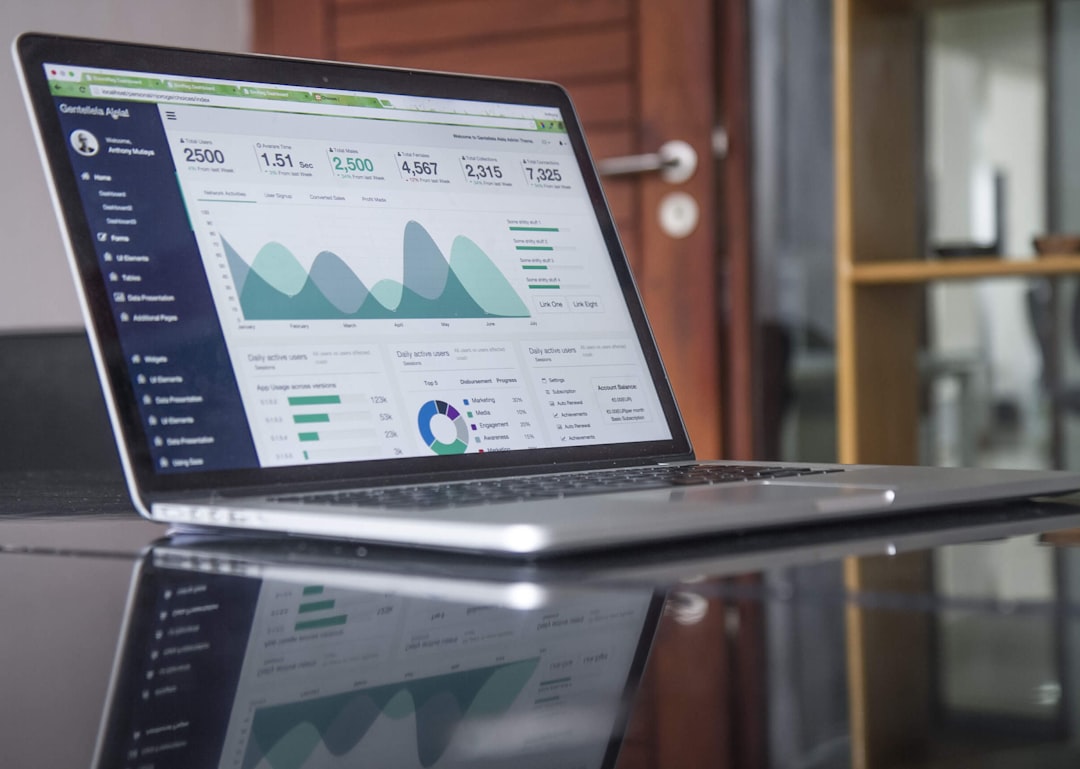Unlock encrypted content
Please enter your SSCE key to initiate on-the-fly decryption.
Decryption key: (Click cancel if you don't have the key)
Copied link to clipboard.
This feature is unavailable for free accounts. Upgrade now and enjoy all Premium benefits.
Go Premium!
This feature is unavailable for free accounts. Upgrade now and enjoy all Premium benefits.
Go Premium!
Please open this page in browser ( Google Chrome or Safari ) to use this feature.
Open In Browser
Data Mirroring Across Multiple Data Centers: Ensuring Redundancy and Reliability
Random related video for this blog.
Copied share link to clipboard.
The need to store, protect, and access data efficiently and securely has never been more important. This is where data mirroring across multiple data centers comes into play. By replicating data across geographically dispersed locations, organizations can ensure redundancy and reliability, safeguarding against data loss and minimizing downtime. In this article, we will explore the concept of data mirroring, its benefits, and how it is applied in real-world scenarios.
The Power of Data Mirroring
Data mirroring is a technique used to create and maintain identical copies of data in real-time across multiple data centers. By doing so, organizations can achieve a higher level of data availability and fault tolerance. In the event of a hardware failure or natural disaster affecting one data center, the mirrored data can seamlessly take over, minimizing disruption and ensuring continuous access to critical information. One practical example of data mirroring is in the realm of cloud storage for businesses. Cloud storage providers like FileLu offer data mirroring as a core feature of their services. By employing advanced replication technologies, such as synchronous or asynchronous mirroring, they can ensure that a customer's data is automatically duplicated across multiple data centers. This not only provides peace of mind but also allows for faster data retrieval and improved performance.Advanced Security Measures
With the ever-increasing threat of cyberattacks, ensuring the security of stored data is paramount. This is where advanced encryption algorithms and multi-factor authentication come into play. Data mirroring, coupled with robust security measures, provides an additional layer of protection against unauthorized access. For instance, FileLu employs advanced encryption algorithms to safeguard customer data during transit and at rest. This ensures that even if the mirrored data is compromised, it remains unintelligible to unauthorized individuals. Additionally, by implementing multi-factor authentication, FileLu adds an extra level of securityby requiring users to provide multiple forms of verification before gaining access to their data.
Ensuring Vehicle Safety Systems
Data mirroring also plays a crucial role in ensuring the safety and reliability of vehicle systems. With the rise of connected cars and autonomous vehicles, the amount of data generated and processed by these systems is staggering. To ensure the seamless operation of vehicle safety systems, such as collision avoidance and adaptive cruise control, data mirroring is employed. In this context, data mirroring allows for real-time replication of critical vehicle data, such as sensor readings and control commands, across multiple data centers. This redundancy ensures that even in the event of a communication failure or system malfunction, the vehicle's safety systems can continue to operate effectively. This is particularly crucial in scenarios where split-second decisions can mean the difference between life and death.Conclusion
Data mirroring across multiple data centers is a powerful technique that provides redundancy, reliability, and security for businesses and individuals alike. Whether it is in the realm of cloud storage, advanced security measures, or vehicle safety systems, data mirroring plays a vital role in ensuring the availability and integrity of critical information. By embracing this technology, organizations can minimize the risk of data loss, optimize performance, and enhance overall data protection.Frequently Asked Questions (FAQs)
Question: What is data mirroring? Answer:
Data mirroring is a technique used to create and maintain identical copies of data in real-time across multiple data centers. It ensures redundancy and reliability, safeguarding against data loss and minimizing downtime.
Question: How does data mirroring enhance security? Answer:
Data mirroring, coupled with advanced encryption algorithms and multi-factor authentication, provides an additional layer of protection against unauthorized access. This ensures the security of stored data, even in the event of a breach.
Question: How does data mirroring benefit vehicle safety systems? Answer:
Data mirroring ensures that critical vehicle data, such as sensor readings and control commands, is replicated in real-time across multiple data centers. This redundancy ensures the seamless operation of vehicle safety systems, even in the event of a communication failure or system malfunction.
Case Studies 1. Company XYZ, a leading e-commerce platform, implemented data mirroring across multiple data centers to ensure uninterrupted access to customer data. This allowed them to maintain high availability and provide a seamless shopping experience for their customers, even in the face of unexpected outages. 2. In the healthcare industry, data mirroring is utilized to safeguard patient records and ensure continuous access to critical medical information. Hospital ABC implemented data mirroring across their network of hospitals, enabling doctors and healthcare professionals to access patient data in real-time, regardless of the location. 3. Autonomous vehicle manufacturer DEF relies on data mirroring to ensure the safety and reliability of their vehicles. By replicating critical vehicle data across multiple data centers, they can guarantee that their vehicles' safety systems continue to operate effectively, even in challenging conditions. By Amelia Isabella
Email: [email protected]
Related
Reputable Project Management Software: Enhancing Efficiency and Collaboration
June 20, 2023
Read More
Cloud-based file editing: Enhancing Collaboration and Productivity in the Digital...
June 20, 2023
Read More
Cybernetics: Exploring the Potential of Virtual Reality, Transhumanism, and 5G...
June 21, 2023
Read More
Cyberpunk Data Analytics: Exploring the Future of Immersive Media Storage...
June 21, 2023
Read More
5G Technology: Revolutionizing Connectivity and Enabling Innovative Solutions
June 21, 2023
Read More
Data Storage: Seamless File Integration with Third-Party Apps and Enhanced...
June 21, 2023
Read More
Popular
Latest
The Future of Digital Transformation: Exploring Smart Homes, Efficient File...
November 30, 2025
Read More
Exploring the Benefits of Cloud Storage and Innovative Technologies in...
November 26, 2025
Read More
The Future of Technology: Exploring Biohacking, Space Tourism, and Digital...
November 23, 2025
Read More
The Future of File Sharing: Streamlined Workflows for Photographers and...
November 19, 2025
Read More
Exploring the Intersection of Technology: From Cybersecurity to Augmented Reality...
November 16, 2025
Read More
The Future of File Management: Embracing Edge Computing and Efficient...
November 12, 2025
Read More
The Future of File Sharing: Exploring User-Friendly Solutions and Data...
November 5, 2025
Read More
The Future of Cloud Storage: How FileLu Empowers Creative Professionals...
November 2, 2025
Read More
The Future of Autonomous Technologies: Innovations in Robotics, File Sharing,...
October 29, 2025
Read More
Emerging Technologies Revolutionizing File Management: From Li-Fi to Robust Collaboration...
October 26, 2025
Read More
Emerging Technologies: Exploring the Impact of File Access Auditing, Genetic...
October 19, 2025
Read More
The Future of Data Storage: Exploring Advanced Encryption, Mobile Integration,...
October 5, 2025
Read More
Exploring the Future of Data Management: Security, Efficiency, and Cognitive...
September 28, 2025
Read More
Revolutionizing Data Management: Innovations in Storage, Security, and Sustainable Technology.
September 24, 2025
Read More




















